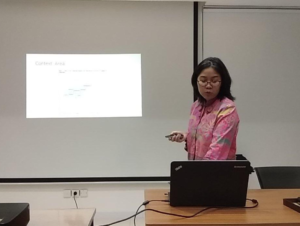On Friday, 25 May 2018, LPEM FEB UI hosted the last FKP seminar in Maywith a presentation by Prani Sastiono (LPEM FEB UI) on pricing strategy policy in controlling demand for water in Tangerang. As water is an essential aspect for human activities, understanding the demand for water is important. The main objective of the study is to understand the sensitivity of water demand to price changes in order to enable the government to use price as a potential instrument to manage demand over time.
Using regression discontinuity technique, the researcher estimates water demand elasticity using monthly water consumption data of PT Air Aetra Tangerang consumers in eight sub-districts in Tangerang Regency. Observations on monthly water consumption over a period of 57 months for more than 50.000 consumers were used. These consumers are classified into households, business, commercial enterprises, and social clients. During that period, PT Air Aetra Tangerang adjusted water tariffs twice, in November 2014 and March 2017, where the 2014 adjustment was sudden and less anticipated by consumers.
Prani Sastiono present her study at LPEM FEB UI
The study found an average of 3.9% decrease on household consumption level as a result of 14% tariff increase. This shows that the price elasticity of water demand for households is inelastic at -0.27 or in other words, a 1% increase in price results in only 0.27% decrease in water consumption. The same tariff change also reduced non-household consumers’ monthly water consumption by 15.6% on average, indicating an elastic response. This result implied a more elastic price elasticity of water demand for of non-household consumers was -1.23, and for industrial and commercial customers -1.5. This means that a 1% increase in price results in more than 1% decrease in water consumption.
Higher-income consumers have tendency to be insensitivee towards tariff adjustment policies. This tendency, however, decrease in the long run, revealing a more inelastic water demand in the long run. The study also found a substantial variations in average water consumption level when price changes, where there was higher elasticity in Pasar Kemis and Sepatan Sub-Districts (-0.57 and -1.01 respectively) and lower elasticity in Cikupa (-0.26).
The estimation of water demand elasticity could be used to measure aggregate demand for water, and thus to predict the water demand-supply balance in the future. From this study, the government may formulate pricing strategies for water utilities to manage short run demand to alter water consumption behavior while improving its service.
For the complete presentation and Q&A session, please refer to the videos and materials provided.





